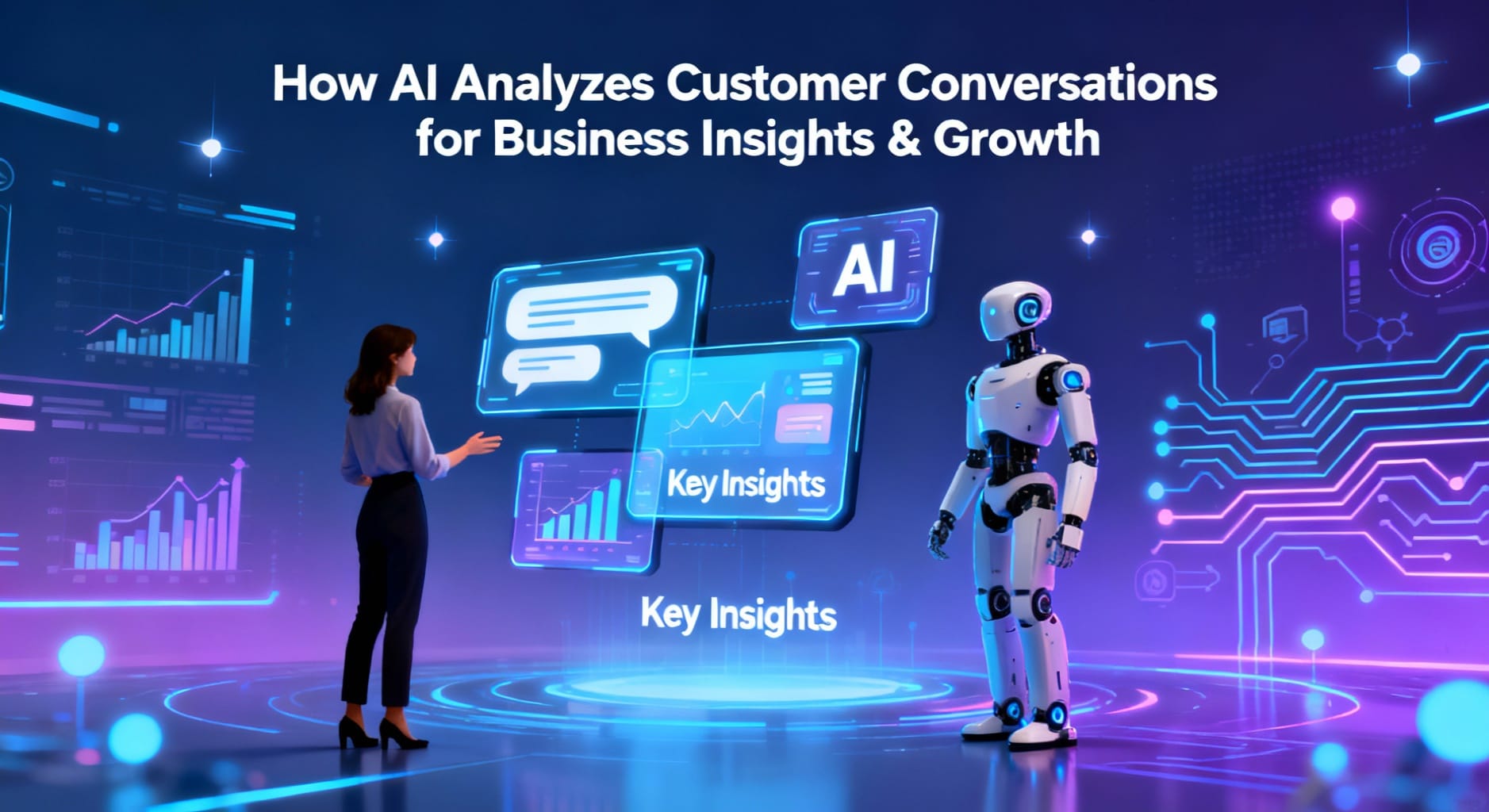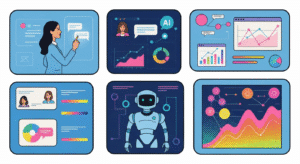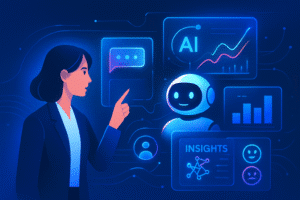New App Launching SOON - Join the Waitlist for Robo Teams 2.0
New App Launching SOON - Join the Waitlist for Robo Teams 2.0

Businesses are always looking for ways to better understand their customers and enhance decision-making. One powerful tool that’s been transforming this process is Artificial Intelligence (AI). By using technologies like natural language processing (NLP) and machine learning, AI analyzes customer conversations from various platforms, turning raw data into actionable insights that drive growth.
At RoboTeam AI, we specialize in helping businesses unlock the full potential of customer conversations to fuel growth and optimize decision-making. Contact us today to discover how we can help your business leverage AI to gain a competitive edge.

This process delivers real-time insights that help businesses understand customer opinions about their products and services. By leveraging these insights, companies can make faster decisions, refine strategies, and improve customer engagement.
AI’s ability to analyze customer conversations depends on its use of NLP and machine learning. Here’s how these technologies work together to turn raw data into valuable business insights.
The first step in AI-driven analysis is collecting data. Businesses interact with customers across multiple channels, including email, live chat, social media, and phone calls. AI systems consolidate all this data in one place, ensuring that no conversation is overlooked.
This centralization provides a comprehensive view of customer interactions, regardless of the platform, helping businesses understand their customers more holistically.
After data is gathered, it must be preprocessed for accurate analysis. This step involves cleaning the data by removing irrelevant information and ensuring consistency across the dataset.
Techniques like tokenization (splitting text into smaller segments) and text normalization (standardizing variations in word usage) help prepare the data for deeper analysis. By eliminating filler words and repetitive phrases, the data becomes more reliable, allowing AI to provide clearer insights.

For instance, NLP can quickly analyze large volumes of customer feedback and identify recurring issues, such as complaints about a product feature or dissatisfaction with customer service. These insights help businesses identify problems early and take appropriate action.
Machine learning (ML) enhances AI’s ability to analyze conversations by identifying patterns, trends, and correlations within the data. Machine learning algorithms detect recurring themes, such as common product complaints or growing interest in a new feature.
By recognizing these trends, AI can help businesses understand what’s happening in real-time and predict future patterns. This predictive capability allows businesses to address emerging issues before they become widespread problems.
Sentiment analysis is an essential part of conversational analytics. AI analyzes customer conversations to classify the sentiment as positive, negative, or neutral. For example, AI can scan social media posts to determine how customers feel about a newly launched product.
Beyond general sentiment, AI also identifies specific emotions, such as frustration, satisfaction, or excitement. Understanding these emotions helps businesses gain deeper insights into customer needs and adjust their approach accordingly.
Once AI processes and analyzes the data, it generates actionable insights that businesses can use to refine their strategies. These insights are based on patterns, sentiment, and emerging trends identified in the conversations.
For example, AI may uncover that customers are frustrated with a complicated product interface. With this insight, businesses can simplify the interface or offer clearer guidance to resolve a common issue and improve the overall customer experience.
By generating these insights, AI helps businesses make informed decisions, quickly adjust their strategies, and better meet customer needs.

For example, if AI identifies that long wait times on customer service calls are leading to customer dissatisfaction, businesses can adjust staffing levels or streamline their processes to reduce delays.
AI’s ability to close the feedback loop ensures continuous improvement based on real-time customer feedback, allowing businesses to grow and adapt more effectively.
AI has revolutionized how businesses understand customer conversations. By listening to these interactions, AI uncovers valuable information about customer preferences, buying habits, and potential pain points. This knowledge enables businesses to improve products, update services, and build stronger relationships with their customers.
For businesses looking to stay ahead of the competition, AI provides a powerful solution for gaining deeper insights into customer behavior. By integrating AI-powered conversational analytics into their strategies, companies can drive innovation, enhance customer experiences, and fuel long-term growth.
Want to unlock the full potential of your customer conversations? Contact us at RoboTeam AI today to learn how AI-powered conversational analytics can transform your business strategy and help you grow.